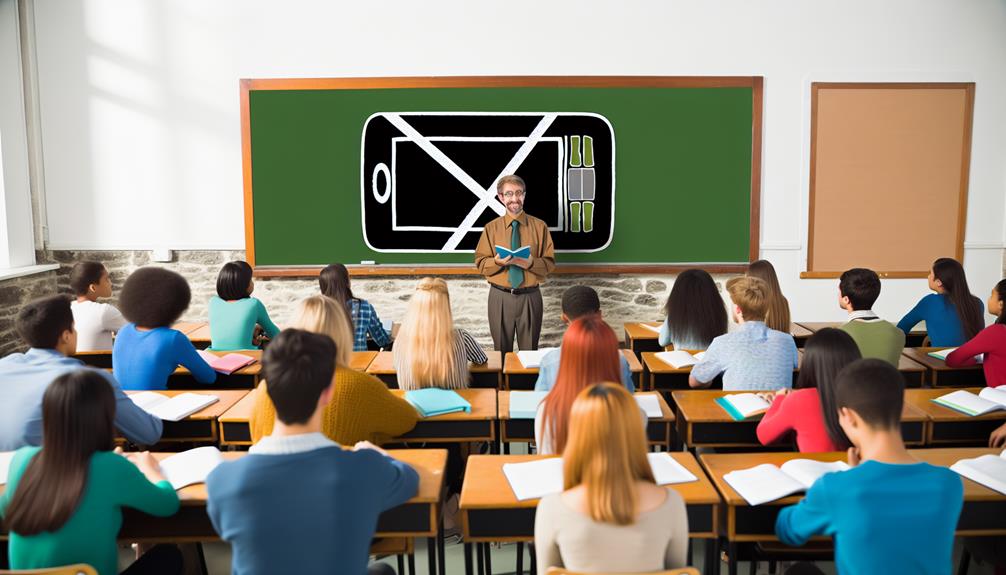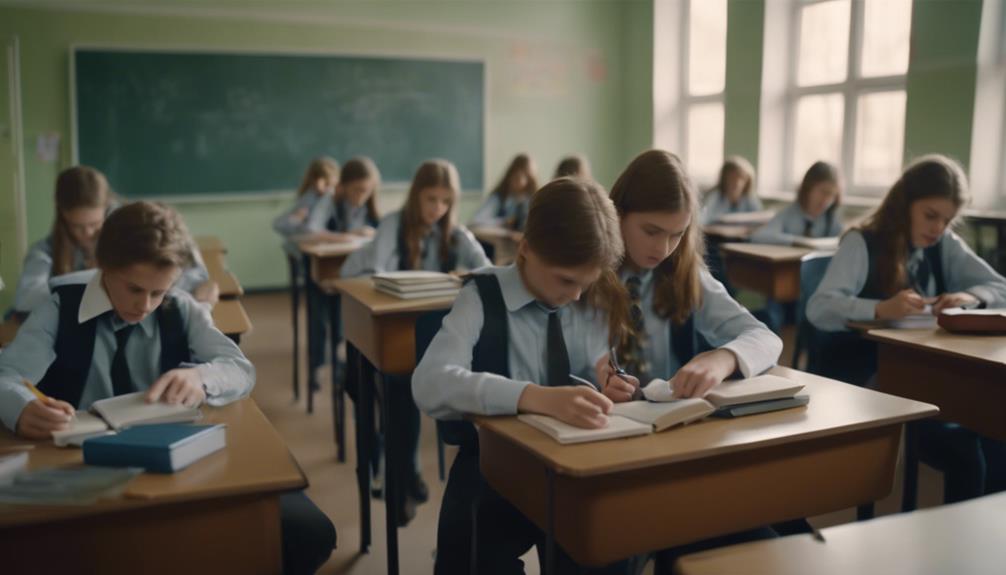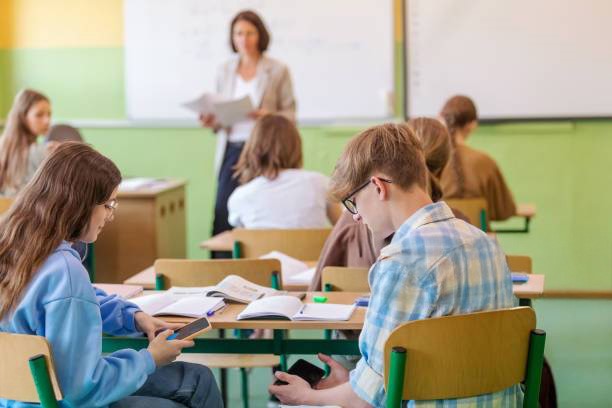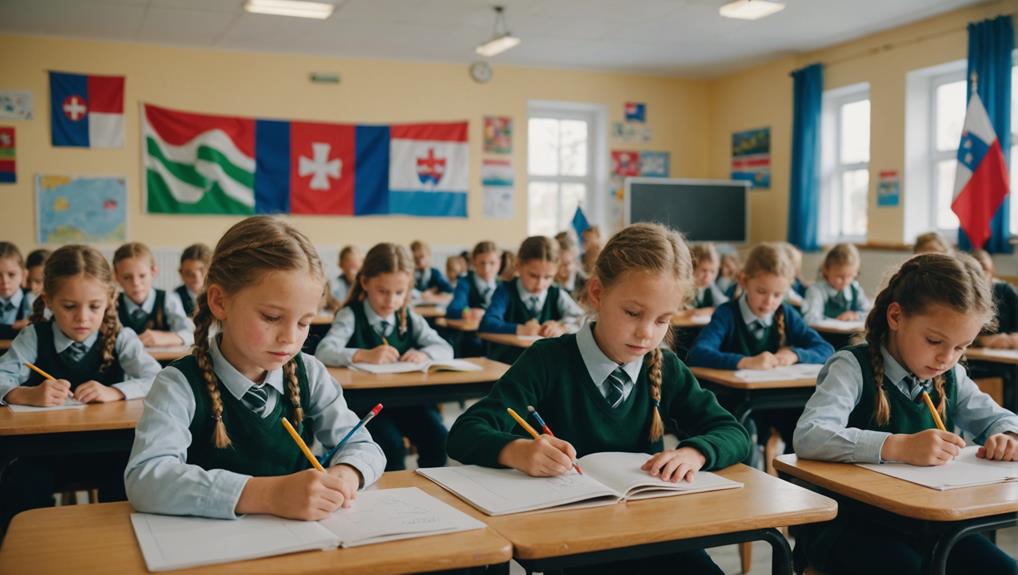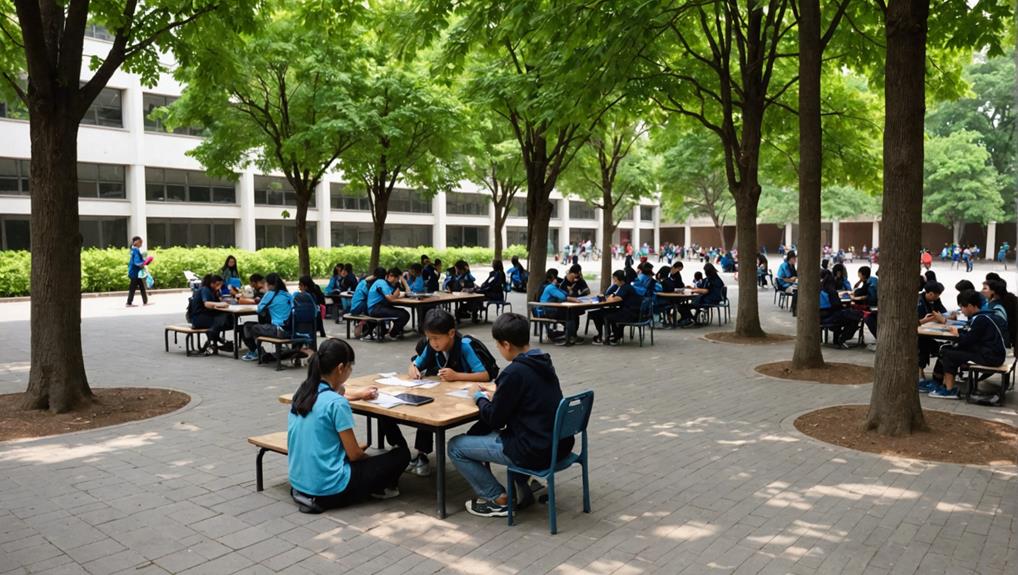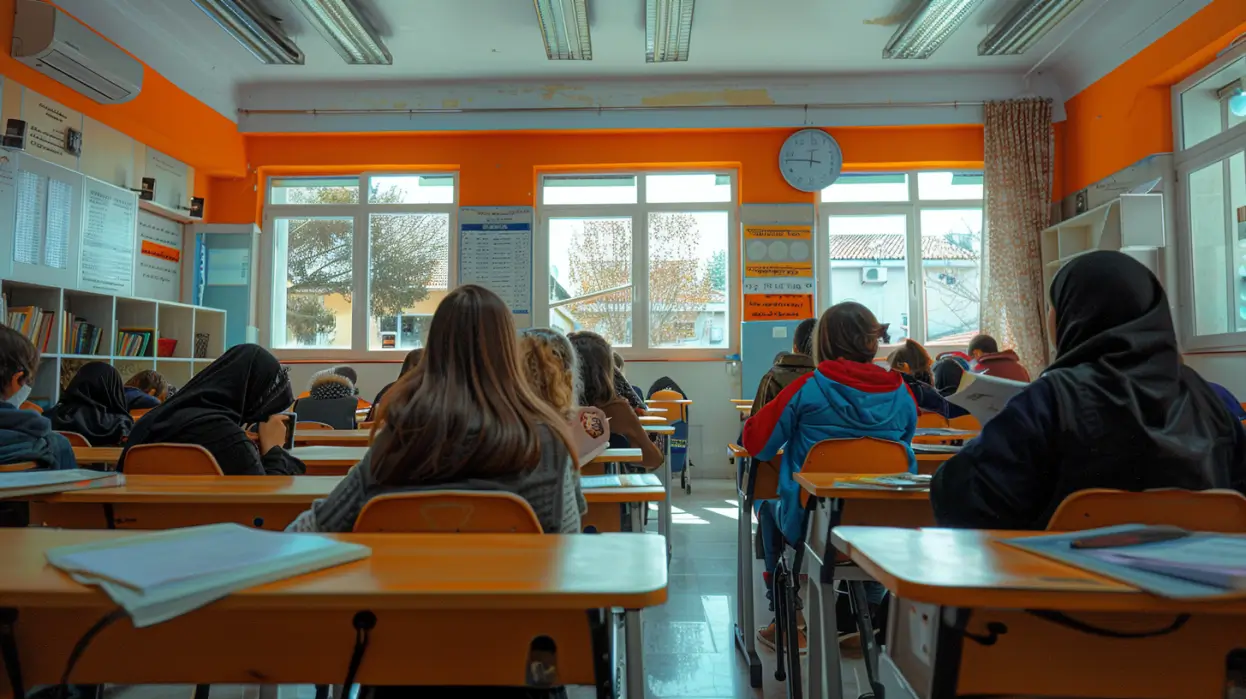Smartphone Ban in Irish Schools
The recent proposal to ban smartphones in Irish schools has sparked a multifaceted debate, highlighting concerns about the impact of digital devices on students’ mental health and educational outcomes. This initiative, supported by various stakeholders including the government and local communities, aims to foster a healthier, more focused learning environment. However, the complexities surrounding implementation, parental involvement, and the balance between technology use and emotional maturity present significant challenges. As we explore the intricacies of this policy and its potential implications, one must consider: can a smartphone ban truly reshape the educational landscape and enhance student well-being?
Key Takeaways
- The Irish government is considering a nationwide ban on smartphones in primary schools to improve mental health and academic performance.
- Primary schools in Greystones, Delgany, and Waterford have implemented ‘no smartphone’ codes with community and parental support.
- UNESCO has called for a global ban on smartphones in schools to address disruptions and mental health issues.
- Major mobile phone operators in Ireland support the ban, proposing restrictions on smartphone sales to primary school-age children.
- Parents are encouraged to delay smartphone usage until post-primary school to reduce anxiety and promote healthier childhood experiences.
The Rise of Smartphone Usage Among Children
The increasing prevalence of smartphones among children has become a notable trend, as evidenced by in-depth studies and surveys. The Growing Up in Ireland study highlights that 40% of children own a mobile phone by the age of 9, while a survey by CyberSafeKids revealed that almost half of ten-year-olds use smartphones in their bedrooms. This rise necessitates increased parental responsibility to guarantee digital wellbeing and online safety.
Smartphone usage concerns extend to screen time and its impact on child development and social skills. Schools are responding with various policies and technology education initiatives to mitigate these effects. For instance, some primary schools employ voluntary no-smartphone codes, emphasizing the need for balanced technology education that aligns with child development goals.
Moreover, addiction prevention and family communication are critical areas where parents play an indispensable role. Positive supervision at home and open conversations about digital habits are more effective than restrictive measures alone. These strategies can help children develop healthy online behaviors and foster better social skills.
To address these challenges, thorough school policies and community-driven initiatives like Wicklow’s “It Takes a Village” can provide a balanced framework, ensuring that technology use supports rather than hinders children’s growth.
The Impact of Smartphones on Children’s Health and Education
Rising concerns about the widespread use of smartphones among children have sparked a heated debate about their influence on health and education. Data from the World Health Organisation underscores the public health consequences of excessive screen time, linking it to declining mental health and well-being. A systematic review in 2020 found that mental distress and treatment for mental health conditions among youth have increased in parallel with elevated smartphone usage.
Irish doctors have raised alarms about the mental health risks associated with excessive smartphone use, treating the excessive use of smartphones and social media as a public health emergency. This concern has added urgency to the implementing restrictions, reinforcing the need for bans to protect children from issues like anxiety, depression, and loneliness, which have been linked to unregulated smartphone use.
Academically, smartphones are a two-sided coin. While they offer educational resources, their presence in classrooms often disrupts learning environments, leading to decreases in academic performance. UNESCO’s call for a global ban on smartphones in schools highlights this issue, suggesting that restrictions could alleviate these negative effects.
Parental guidance remains essential in managing children’s screen time and online behavior. Parents face a challenging landscape, with smartphones providing unrestricted access to risky online activities like cyberbullying and inappropriate content. Effective parental strategies, including setting screen time limits and fostering open conversations about responsible usage, are crucial.
The well-being impact of unregulated smartphone use is significant, affecting both mental health and academic outcomes. Therefore, a balanced approach to smartphone policies in schools, supported by robust parental involvement, is necessary for safeguarding children’s overall development.

The Greystones and Delgany Initiative
In response to increasing concerns about the impact of smartphones on children’s well-being and academic performance, eight primary schools in Greystones and Delgany have implemented a voluntary ‘no smartphone’ code. The initiative was launched with significant parental involvement and community support, aiming to mitigate rising anxiety levels in pupils and shield them from inappropriate online content.
By collectively agreeing not to buy smartphones for their children until they start post-primary school, parents reduce peer pressure and promote a healthier environment for mental health and digital literacy. The code received overwhelming support, with 95% of parents in favor, underscoring the community’s commitment to fostering a safer and more focused educational experience.
| Aspect | Details | Impact |
|---|---|---|
| Implementation Date | May | Immediate adherence |
| Schools Involved | 8 Primary Schools | Unified approach |
| Parental Support | 95% | High community buy-in |
| Key Concerns | Anxiety, Inappropriate Content | Mental health focus |
| Peer Pressure | Reduced through joint effort | Enhanced well-being |
This initiative not only addresses immediate concerns but also sets a precedent for other communities. By delaying smartphone access, Greystones and Delgany are proactively tackling issues related to children’s mental health and digital literacy, providing a model that balances technological readiness with emotional maturity.
The ‘Gen Free’ Charter in Waterford
Waterford’s primary schools have collectively endorsed the ‘Gen Free’ charter, an initiative designed to curb early smartphone usage among children. This charter seeks to foster parental responsibility by encouraging parents to commit to not providing smartphones to their children until they reach post-primary school. This collaborative effort between schools and parents aims to establish screen time limits and promote healthier childhood experiences.
The ‘Gen Free’ charter is prominently displayed in every primary school in Waterford, reinforcing a united front in tackling early smartphone exposure. This initiative emphasizes school collaboration in addressing the challenges posed by modern technology. By signing up to the charter, parents agree to keep their children off social media and away from smartphones, thereby supporting a community-wide effort to enhance technology literacy and guarantee responsible usage.
Community support has been pivotal in the success of this initiative. Parents are not only asked to sign the charter but also to display it at home, creating a consistent message across both school and home environments.
Additionally, several post-primary schools in Waterford are implementing complementary measures, such as phone pouches, to manage smartphone use during class time. This integrated approach underscores the importance of a cohesive strategy in fostering a balanced and healthy digital environment for children.

Government Support and Policy Development
The Irish government has played a pivotal role in promoting smartphone bans in schools, recognizing the growing concerns about children’s digital well-being. Education Minister Norma Foley introduced new guidelines to support parents and schools in implementing voluntary smartphone bans, emphasizing a community-wide approach to reduce peer pressure and safeguard children.
In addition to these guidelines, the government is considering legislation to restrict smartphone sales to children under 13. The initiative has received strong backing from major telecommunications companies, which control 95% of Ireland’s mobile phone market. These operators have endorsed the “keep childhood smartphone-free” initiative, further legitimizing the effort to limit smartphone use among primary school children.
This alignment between government policy and industry support represents a significant step toward a national culture that prioritizes children’s mental health and educational focus. By providing clear guidance and fostering collaboration between schools, parents, and telecom providers, the government is helping to create a safer, more supportive environment for young students.
The momentum generated by these initiatives suggests that similar measures might soon be adopted in secondary schools, reflecting a broader shift in how Ireland approaches digital device usage in educational settings.
Public Response and Challenges
The smartphone ban in Irish primary schools has garnered significant public support, with a nationwide poll indicating that 90% of respondents favor the initiative. However, several challenges have surfaced in the process of implementing these bans.
Parental Dilemmas and Peer Pressure: While many parents support the bans, some struggle with the pressure to give their children smartphones due to social norms and concerns about their safety. This can lead to inconsistencies in enforcement and feelings of isolation among parents who adhere to the ban.
Social Isolation Concerns: Restricting smartphone access can make children feel excluded from their peer group, especially in social settings outside of school. This potential for social isolation is a significant concern for parents, as it could affect their child’s ability to maintain friendships and stay connected.
Emergency Communication: Another challenge is the fear of not being able to contact children in emergencies. Parents worry about the safety implications of their children being without a smartphone, particularly when they are away from home.
Educational Considerations: While reducing distractions and enhancing focus in the classroom is a clear benefit, the ban may prevent students from learning how to manage their smartphone use responsibly. This raises questions about whether students are being adequately prepared for the digital demands of modern life.
Balancing these diverse factors is essential for developing effective policies that promote well-being while considering the complexities of modern digital life.
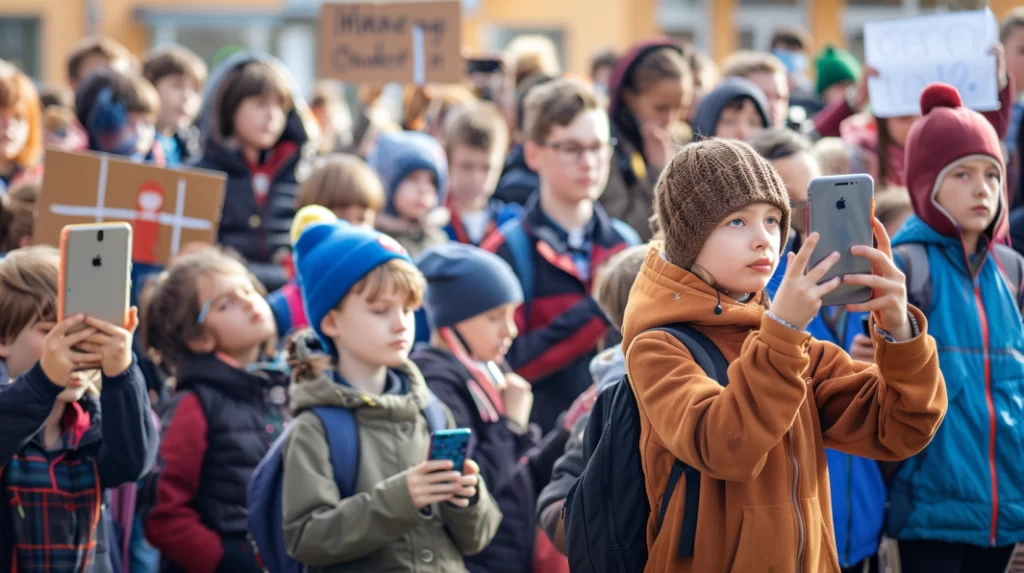
Smartphone Policies Around the World
Several countries have implemented varying smartphone policies in schools to address concerns over academic performance and student well-being. For example, France, the Netherlands, and regions of Canada and Australia have enacted bans on mobile phones in schools. These policies aim to minimize classroom distractions and enhance digital literacy by promoting responsible technology integration.
In contrast, countries like the United Kingdom, the United States, and Ireland leave the decision to the individual schools, resulting in a mix of policies aimed at balancing parental involvement and the mitigation of social media’s impact on mental health. England’s government, for instance, has issued advice to stop mobile phone use during the school day due to longstanding concerns about social media’s effects on young people.
| Country | Policy Approach |
|---|---|
| France | National ban on mobile phones in schools |
| Netherlands | Tightened restrictions on smartphone use |
| United Kingdom | Government advice, no national ban |
| United States | School-specific policies |
| Ireland | School-specific policies |
| Canada | Regional bans in certain areas |
This comparative analysis highlights the diversity in smartphone policies worldwide, reflecting a complex interplay between academic performance, technology integration, and student well-being. Such policies underscore the need for ongoing evaluation to optimize educational outcomes and foster a balanced digital literacy environment.
Alternative Solutions and Complementary Approaches
Addressing the challenges posed by smartphone use in schools demands innovative and multifaceted strategies that go beyond outright bans. One effective approach is enhancing digital literacy among students. Implementing extensive programs that educate pupils about responsible smartphone use and online safety can equip them with the necessary skills to navigate digital environments wisely.
Parental involvement is also vital. Encouraging the use of parental controls and monitoring tools can help parents limit their children’s screen time and guarantee mobile safety. By actively participating in their children’s digital lives, parents can foster a balanced approach to technology use.
Promoting offline engagement through extracurricular activities, such as sports and arts, can greatly reduce students’ dependency on screens. Schools can introduce initiatives that encourage physical and creative pursuits, providing students with diverse avenues for personal growth and social interaction.
Additionally, practical measures like phone pouches can minimize distractions without completely removing access to smartphones. These pouches allow students to store their devices during school hours, maintaining a balance between accessibility and focus. Learn more about the benefits of the phone locking pouch.
Lastly, advocating for the use of basic mobile phones for communication and safety purposes can reduce exposure to harmful online content while ensuring students remain connected in emergencies.

Frequently Asked Questions
How Do Smartphone Bans Impact Students With Special Educational Needs?
Coincidentally, smartphone bans may hinder students with special educational needs by limiting access to assistive technology essential for individualized education, behavior management, and communication strategies, thereby potentially compromising their learning accommodations and overall academic progress.
Are There Exceptions to the Smartphone Ban for Emergencies?
Exceptions to smartphone bans typically include scenarios involving parental consent for emergency contact, medical reasons, or specific school policies. Teacher discretion plays a critical role in determining when and how these exceptions are implemented effectively.
What Are the Consequences for Students Who Violate the Smartphone Ban?
Like ripples in a pond, violating the smartphone ban can lead to disciplinary actions, impacting academic performance. Parental involvement is essential, as enhanced social interactions and mental health are often observed when adherence to the policy is maintained.
How Are Teachers Trained to Handle Smartphone Bans in Classrooms?
Teachers receive training on enhancing classroom engagement through alternative resources and digital literacy. This includes strategies for teacher support and fostering parent involvement, ensuring a holistic approach to managing smartphone bans effectively and innovatively.
How Do Smartphone Bans Affect After-School Activities and Communication?
Like a double-edged sword, smartphone bans can enhance social skills, promote extracurricular involvement, and bolster family relationships, while positively impacting mental health and study habits. However, they may complicate after-school communication and coordination efforts.
Conclusion
The proposed smartphone ban in Irish schools addresses significant concerns regarding children’s well-being and academic performance, supported by initiatives like the Greystones and Delgany effort and the ‘Gen Free’ Charter in Waterford. Government backing and policy development reflect a broader commitment to fostering healthier childhood experiences. Despite public challenges, the ban underscores the necessity of reducing digital dependency, akin to a modern-day Luddite movement, to prioritize mental health and social interaction in educational settings.


